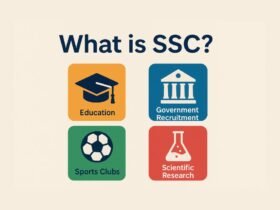Each type of educational franchise, from high schools to preschools, presents unique costs and financial considerations. Understanding these differences is crucial for potential investors and educators looking to venture into the educational franchise market.
This blog post will delve into the costs associated with high school, primary school, and preschool franchises, highlighting the factors influencing these costs and why.
Initial Franchise Fees
The initial franchise fee is the first significant expense for any franchise.
- This fee can be substantial for high schools due to the extensive infrastructure and facilities required. High school franchises often demand advanced laboratories, sports facilities, and expansive libraries, contributing to a higher initial fee.
- Primary schools typically have lower initial franchise fees as their infrastructure needs are less extensive.
- Preschools have the lowest initial franchise fees, requiring fewer specialized facilities and smaller spaces. However, despite the lower initial fee, preschools must be designed with child safety and development in mind, which can add to the overall cost.
Real Estate and Location Costs
The cost of real estate and the school’s location significantly impact the overall investment.
- High schools need large plots of land to accommodate sports fields, auditoriums, and large student bodies. They are often located in suburban or semi-urban areas where space is available but can be costly.
- Primary schools can be situated in residential areas, requiring moderate-sized plots, which reduces costs compared to high schools.
- Preschools can operate in smaller buildings or even converted residential properties.
Building and Renovation Costs
Building and renovation costs are another critical factor.
- High schools often require complex structures with advanced facilities, such as science labs and tech centers, which leads to higher construction and renovation costs.
- Primary schools only require classrooms, playgrounds, and basic facilities (less costly.)
- Preschools have the lowest building and renovation costs. However, they require extensive child-proofing, age-appropriate furniture, and play equipment.
Licensing and Accreditation Fees
Obtaining the necessary licenses and accreditations is crucial for any educational institution.
- High schools offer advanced curricula and prepare students for higher education. This often means schools face rigorous accreditation processes, resulting in higher fees.
- Primary schools also require accreditation with less stringent requirements, so moderate fees can be expected.
- Preschool licensing requirements incur the lowest fees. However, the importance of early education means even preschools must adhere to strict guidelines.
Curriculum and Educational Material Costs
The cost of developing or purchasing curriculum and educational materials varies greatly.
- High schools need comprehensive curriculums that cover a wide range of subjects, including advanced placement courses, which can be expensive. They also require textbooks, laboratory materials, and technology for various subjects.
- Primary schools need a well-rounded curriculum with educational materials suitable for younger children, which are less costly but still significant.
- Preschools focusing on foundational skills and early learning need age-appropriate educational toys, books, and materials, so their curriculum costs the least.
Staffing and Training Costs
Staffing is a major expense for educational franchises.
- High schools need highly qualified teachers, often specialists in their subjects, which drives up staffing costs. Additionally, administrative staff, counselors, and support staff add to the expense.
- Primary schools also require qualified teachers and staff but not to the same specialized extent as high schools, leading to moderate staffing costs.
- While preschools need fewer staff members, they require teachers trained in early childhood education, which can be costly. Training programs for staff at all levels are essential to maintaining educational standards, adding to overall costs.
Marketing and Enrollment Costs
Attracting students and establishing a reputation in the community requires robust marketing.
- High schools, especially new franchises, need significant marketing efforts to compete with established institutions, leading to high marketing costs.
- Primary schools also need effective marketing but can benefit from word-of-mouth and community presence, resulting in moderate costs.
- Preschools require substantial marketing to assure parents of their quality.
Marketing is critical for the high school, primary school, and preschool franchise costs.
Operational and Maintenance Costs
Another significant consideration is the day-to-day operational and maintenance costs.
- High schools, with their extensive facilities, face the highest operational costs, including utilities, maintenance of sports facilities, and technology upgrades.
- Primary schools have moderate operational costs, fewer maintenance facilities, and lower utility expenses.
- Preschools with smaller premises and fewer facilities have the lowest operational and maintenance costs.
Technology and Digital Infrastructure Costs
Investing in technology is crucial for any educational institution in today’s digital age.
- High schools require advanced digital infrastructure, including computer labs, smart classrooms, and online learning platforms, leading to high technology costs.
- Primary schools also need technology but on a smaller scale (moderate costs.)
- Preschools, focusing on foundational skills, require minimal technology, making their digital infrastructure costs the lowest. However, incorporating basic digital tools for interactive learning can enhance the preschool experience and should be considered.
Insurance and Safety Costs
Ensuring the safety and security of students is paramount for all educational institutions.
- High schools with larger student bodies and extensive facilities face higher insurance premiums and safety-related costs. These include security personnel, surveillance systems, and comprehensive insurance coverage.
- Primary schools have moderate safety and insurance costs, balancing between student safety and budget constraints.
- Although smaller, preschools must adhere to stringent safety standards, resulting in significant insurance and safety costs, though lower than high schools.
Conclusion
Investing in an educational franchise, whether a high school, primary school, or preschool, involves carefully considering various cost factors. As you consider entering this rewarding field, remember to weigh the costs alongside the potential benefits and challenges it presents.
*Please insert byline here: Sponsored Blog Post













